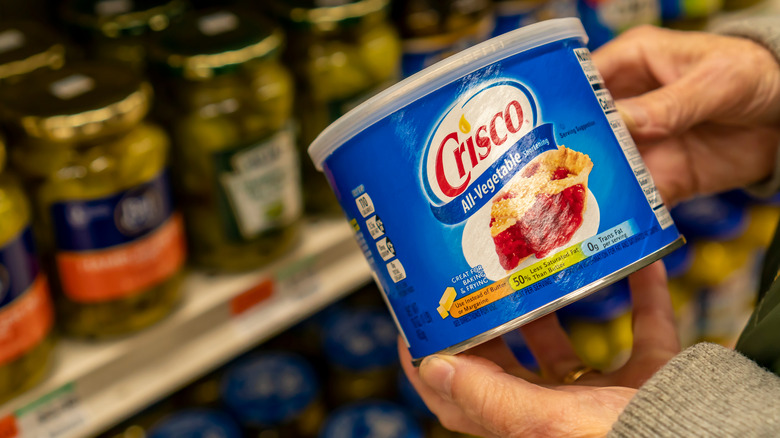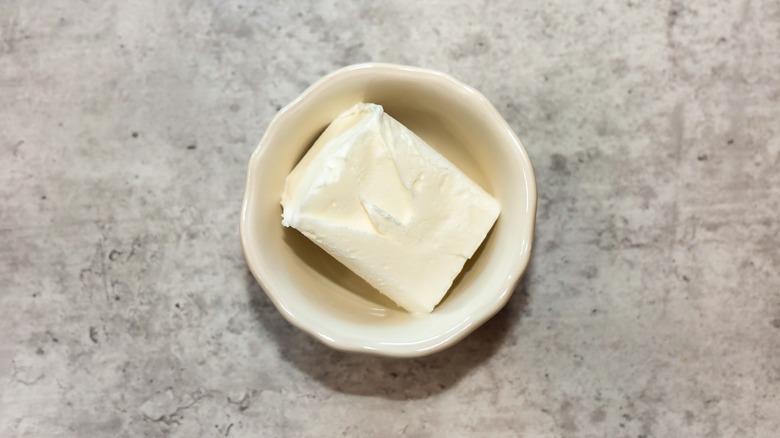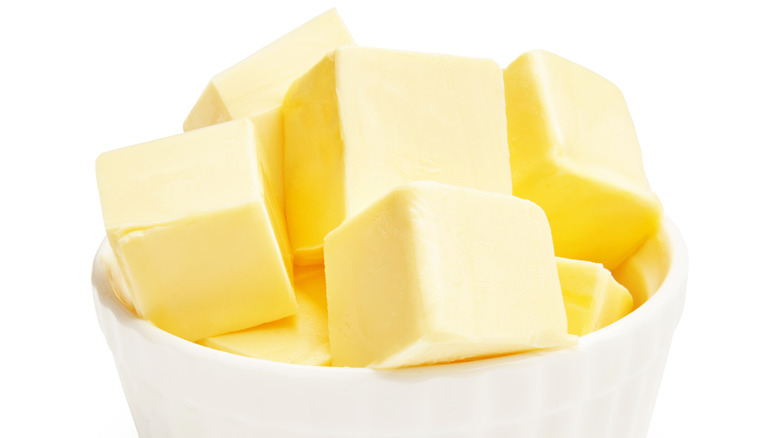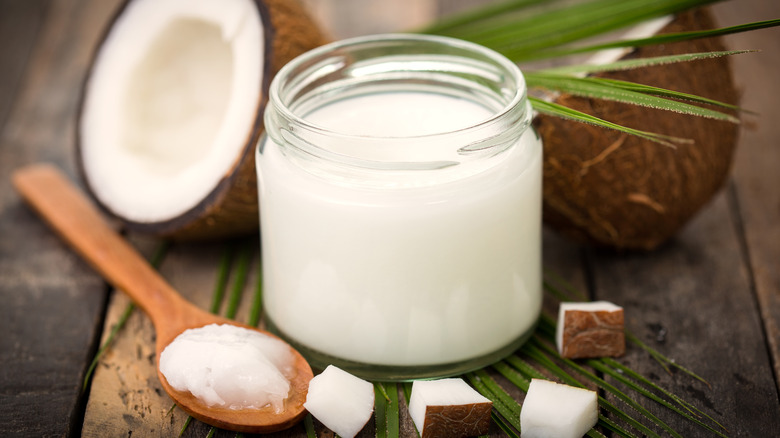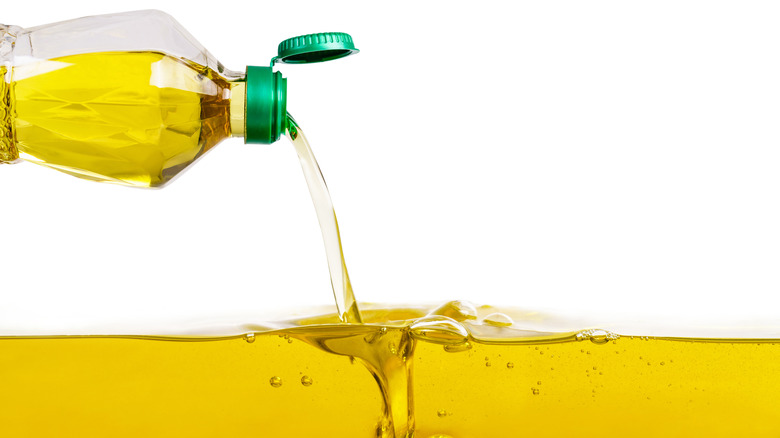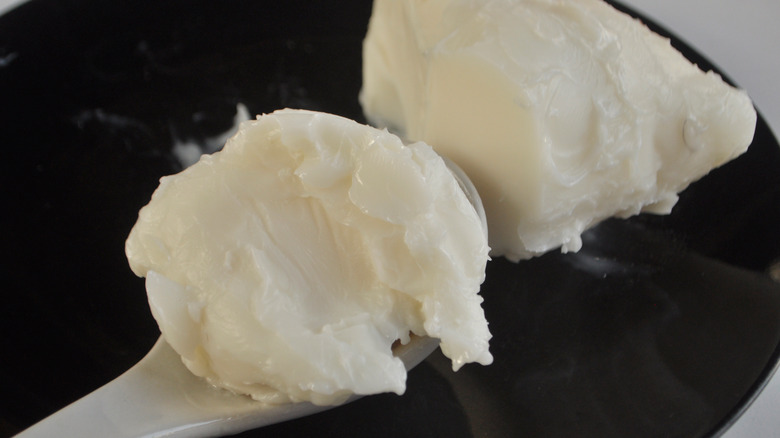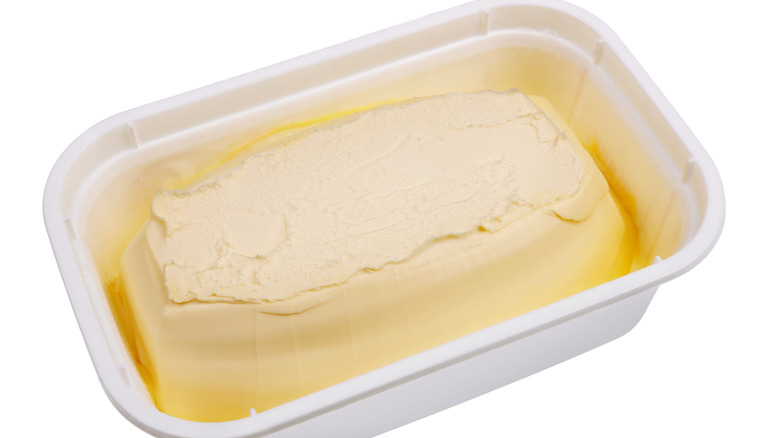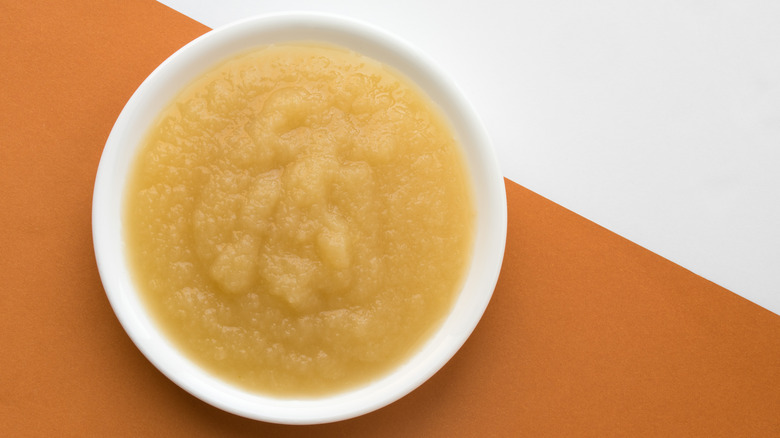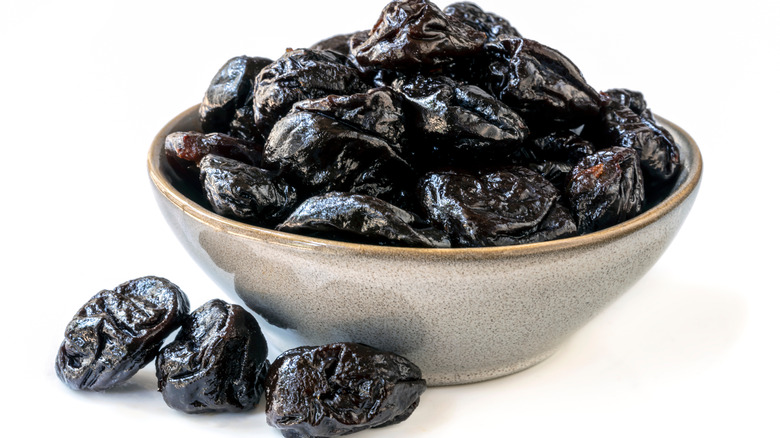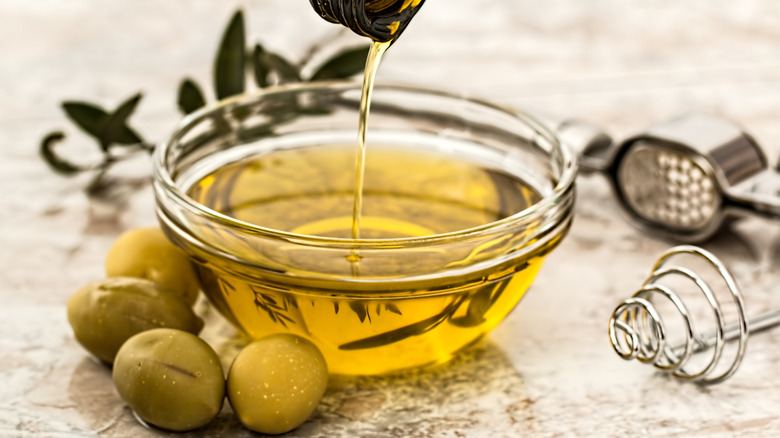8 Best Shortening Substitutes For Baking
We've come a long way since the days of shortening being the primary go-to ingredient listed for the fat component of a recipe. In fact, many now might consider it a bit of an old-school ingredient. But if you don't have that classic can of Crisco — which is 100% fat and primarily consists of soybean oil, fully hydrogenated palm oil, as well as regular palm oil — or another similar brand of shortening hanging around in your pantry, it's important to remember that ultimately what the recipe wants from you is a form of fat, namely one that stays solid at room temperature.
Luckily, there are several options out there that you can substitute in when the recipe calls specifically for shortening, and your kitchen is stocked with every other ingredient on the list except for that. Here are some common pantry items (and a few wild cards) that you can swap for shortening, keeping in mind that you may have to make some adjustments to the amount, per the consistency of each ingredient.
What is shortening?
Shortening is technically a generalized term for cooking fat that can refer to solid vegetable oil or fat sourced from animals such as butter or lard. For baking purposes, though, it usually refers to the type of hydrogenated vegetable oil you might find in a can of Crisco. Other familiar brands include Hymo, Wesson, and Mazola, some of which you've likely seen in your grocery store's baking or oil aisle.
Some of the best ways to bake with shortening include using it to line baking pans as well as layering into a variety of different doughs. Though it might not have the same flavor as some of the substitutes below (which can be a plus or minus, depending on how you look at it), shortening is particularly good at keeping your bakes both tender and flaky.
Like any fat used for cooking, shortening isn't exactly nutritious when applied in excess, but its baking benefits are worth the extra saturated fat so long as you use it — and its substitutes — in moderation. With that in mind, let's look at what works best in its place shortening.
1. Butter
1 cup butter = 1 cup shortening
Most people who enjoy baking always have butter in their fridge. This is why it's probably the easiest go-to replacement for shortening. It's usually safe to assume a one-to-one ratio when subbing butter for shortening so you don't have to complicate things. The results of the final product might vary though, depending on what type of baked good you're aiming to create.
For example, cookies made with butter as opposed to shortening might splay out more on the pan because butter is only 85% solid fat plus 15% water. However, most bread and cake bakers will not really be able to notice a difference with a butter-for-shortening sub in the recipe. And lest we forget to mention pie crusts — those tend to be flakier when you stick with shortening.
Be sure to keep these factors in mind if you decide to go for the butter in the exact same amount suggested for shortening on the recipe. Either way, though, you'll still likely have a delicious outcome.
2. Coconut oil
1 cup coconut oil = 1 cup shortening
Coconut oil has exploded in popularity over the past decade, and some camps even consider coconut oil a superfood. Whether it's deemed healthy (or potentially unhealthy) might depend on whom you're speaking with, the amount in question, and the dietary needs of the person consuming it. However, there's no arguing that it's mostly made up of saturated fats. Its contents, therefore, make it another ideal ingredient to swap for shortening, because as long as the coconut oil is stored at 76 F or lower, it stays solid.
Coconut oil can be substituted at a one-to-one ratio with whatever amount the recipe calls for with shortening. However, do not get it twisted — using coconut oil might impact the taste of your final product. It's definitely got a flavor all its own (that's somewhat nutty but mostly, well, coconut-y) so that's something to consider when utilizing it. A lot of people don't mind a hint of coconut flavor in a cookie or pie crust, but there might be some other flavors it doesn't pair well with, regardless of whether you enjoy coconut oil or not. If you're a household that regularly uses coconut oil in all forms of cooking, it might be a readily accepted addition to baked goods.
3. Vegetable oil
1 cup vegetable oil = 1 cup shortening
While technically vegetable oil can be a suitable swap for shortening, it's only advisable to use it as a sub for baking certain items. For example, when it comes to cookies, vegetable oil is probably not going to yield as tasty of a result as shortening or a number of other more solid fats such as butter, or even a mix of cream cheese and butter.
When it comes to cakes though, as long as your recipe opts for the method of combining all the liquid/wet ingredients, combining all the dry ingredients, then slowly incorporating the dry into the wet to make the batter (as opposed to creaming the fat and sugar together first before adding anything else), using vegetable oil shouldn't be an issue. You're safe to just do a one-to-one ratio when it comes to measuring the vegetable oil, though it is important to keep in mind that your cake might taste a bit dense when you use the vegetable oil instead of the shortening.
4. Lard
1 cup lard = 1 cup shortening
Lard certainly isn't a term you see regularly in modern recipes but it's essentially very similar in texture and appearance to Crisco. It is technically a form of shortening, though it's referring specifically to animal fat, not fat derived from plant-based oils.
Most of the time, the lard you might buy in a store has been processed or dry-rendered from its original state. Its flavor depends on how it is processed. If the lard is from a pig, for example, it's usually not still touting a strong essence of pork, but that can also depend on whether the lard has been naturally processed without the addition of hydrogen and preservatives. Naturally processed lard might still carry a faint scent or flavor of the animal it was sourced from.
Lard can be a substitute for shortening without having to add or take away in terms of measurements but using lard still might affect the taste. When you're cooking with lard, the flavor may be enhanced but with baking, it may be a detriment, mainly because the animal fat might inherently be more savory (again, more or less depending on how it's been processed) while shortening is essentially flavorless.
5. Margarine
1 cup margarine = ¾ cup shortening
While it's true that margarine was initially invented as a less expensive alternative to butter, it lacks the same make-up, consistency, or taste as butter. So while butter can serve as a simple, uncomplicated substitute for shortening, margarine is a bit trickier. It's totally doable but you have to be methodical.
If you're following a recipe that calls for shortening, to effectively swap in margarine instead, you need to use about 20% more of it, which is about one additional cup if the recipe calls for ¾ cups of shortening, for example. This change in ingredient amount is attributed to the fact that margarine is a combination of fat and water (and potentially other liquids) whereas shortening is just straight-up fat. In fact, if you're going to opt for margarine instead of shortening, go for the kinds that are in stick formation, as opposed to spreadable margarine in tubs), since they likely contain a higher percentage of that solid fat.
6. Applesauce
1 cup applesauce = 1 cup shortening
Okay, hear us out. While it may seem like a very boring substitute for shortening, applesauce is a possible option, and perhaps a really good one if you're baking or cooking for someone with dietary restrictions around fat content or cholesterol.
As a general rule, if you're going to use applesauce in place of shortening, prepare for a little trial and error when it comes to taste. Also, keep in mind that it really depends on what you're making. While the use of apple sauce might not be ideal for cakes, if you want to try it, The Atlanta Journal-Constitution suggests maybe doing half apple sauce, and half some other type of shortening substitute, like butter.
Otherwise, you can essentially opt for a one-to-one ratio. Just remember that most desserts baked with applesauce will have a different consistency than they would if you use shortening, and they might not brown as easily.
7. Prune puree
1 cup prune puree = 1 cup shortening
We agree that prune puree doesn't sound very glamorous but it is a low-fat, low-calorie alternative to shortening. According to The Morning Call, prune puree is a viable (not to mention creative and adventurous) one-to-one ratio sub for shortening, mainly because it contains sorbitol and pectin, two helpful properties to have as a baking ingredient. In fact, you should probably be eating more prunes in general.
Sorbitol is a natural sugar alcohol that retains moisture, and pectin also retains moisture and tends to "cream" similarly to fat, creating air bubbles in the creaming process. When you bake cookies, in particular, with prune puree instead of shortening they might stay chewier for longer. The downside is they may not be as crispy.
Keep in mind that using prunes as an ingredient may make the final product have a darker color. The flavor might also be slightly different but not overpoweringly different — of course, that will likely depend on the personal opinion of the person eating the baked good.
8. Olive oil
¾ cup olive oil = 1 cup shortening
If we had to guess a staple that's likely in everyone's kitchen at all times, we'd go with olive oil, which is very popular in both cooking and baking. If you want to try using olive oil as a substitute for shortening, it's possible but be aware that the flavor may change. It has a very distinct taste while shortening tends to be bland and flavorless. With that in mind, definitely make sure you're swapping in a high-quality olive oil with a taste you enjoy on its own. It's also not an ideal substitute if the recipe calls for you to cream the fat with another ingredient.
According to the olive oil pros at Oliviers & Co., always plan to use less olive oil than what the recipe lists for shortening. The general rule is three parts olive oil versus four parts shortening. For instance, if the recipe calls for a cup of shortening, plan to use ¾ cups of olive oil. Going with a one-to-one ratio might yield a much greasier result.
